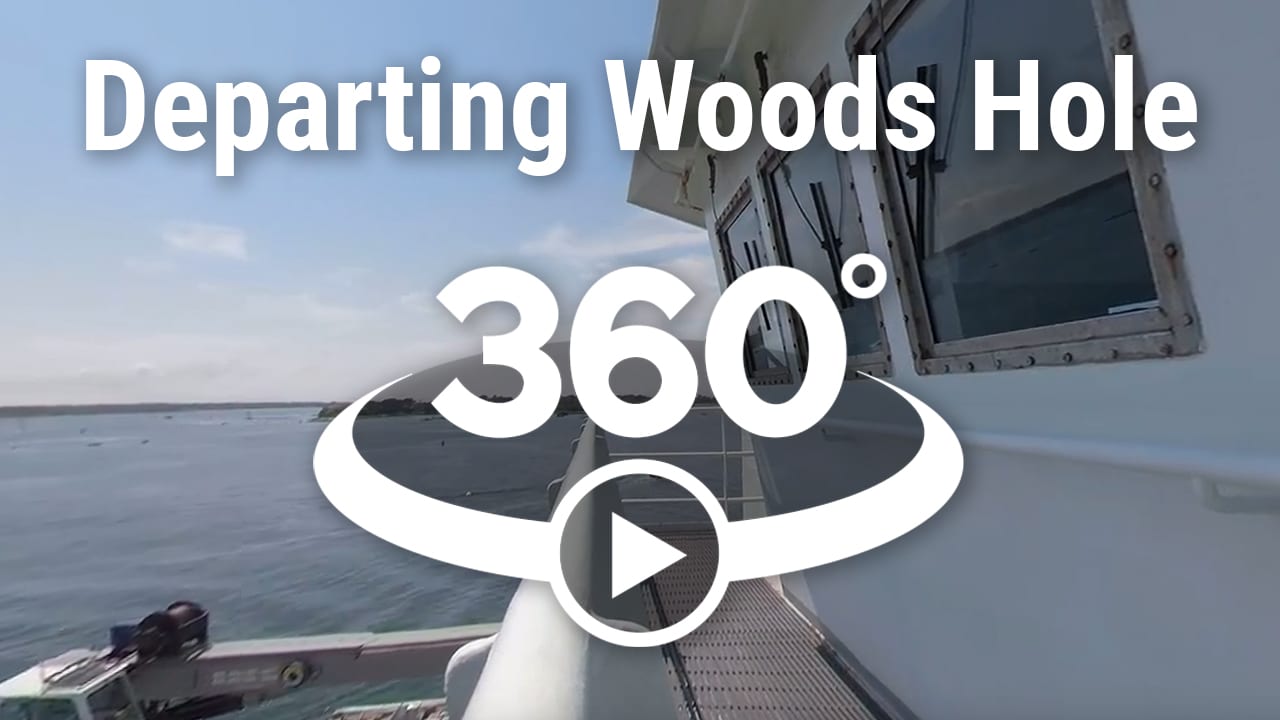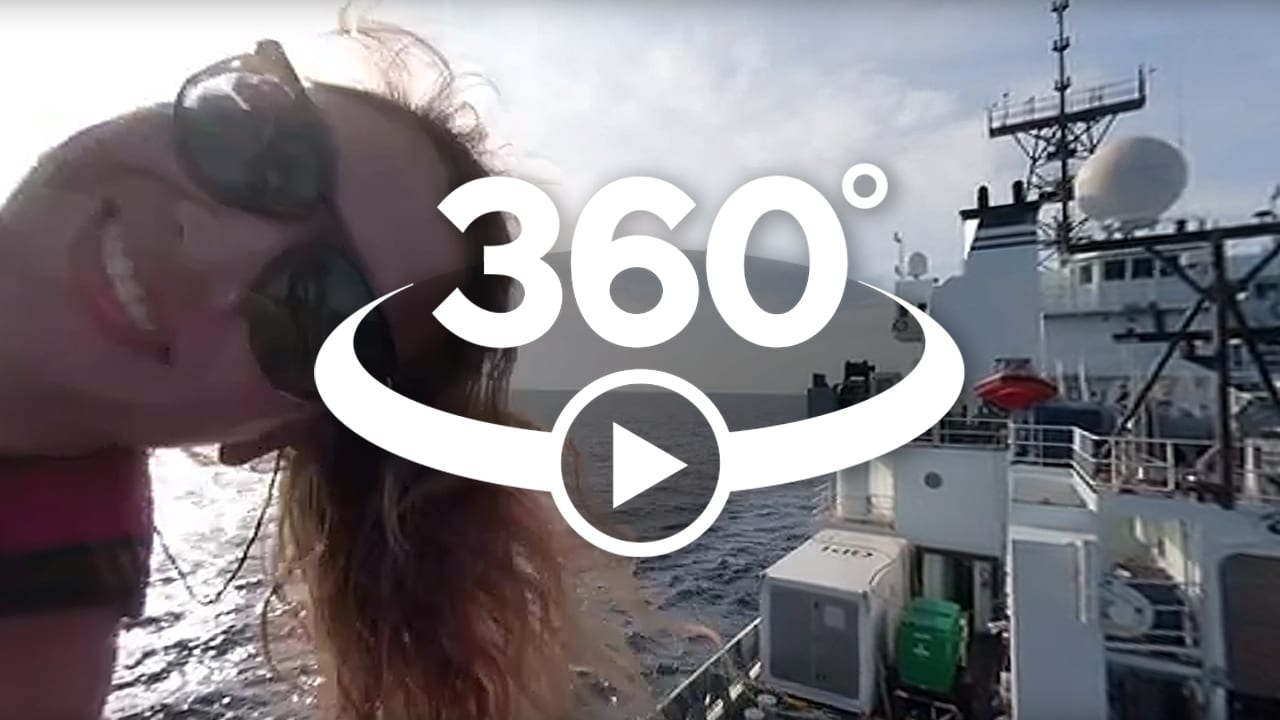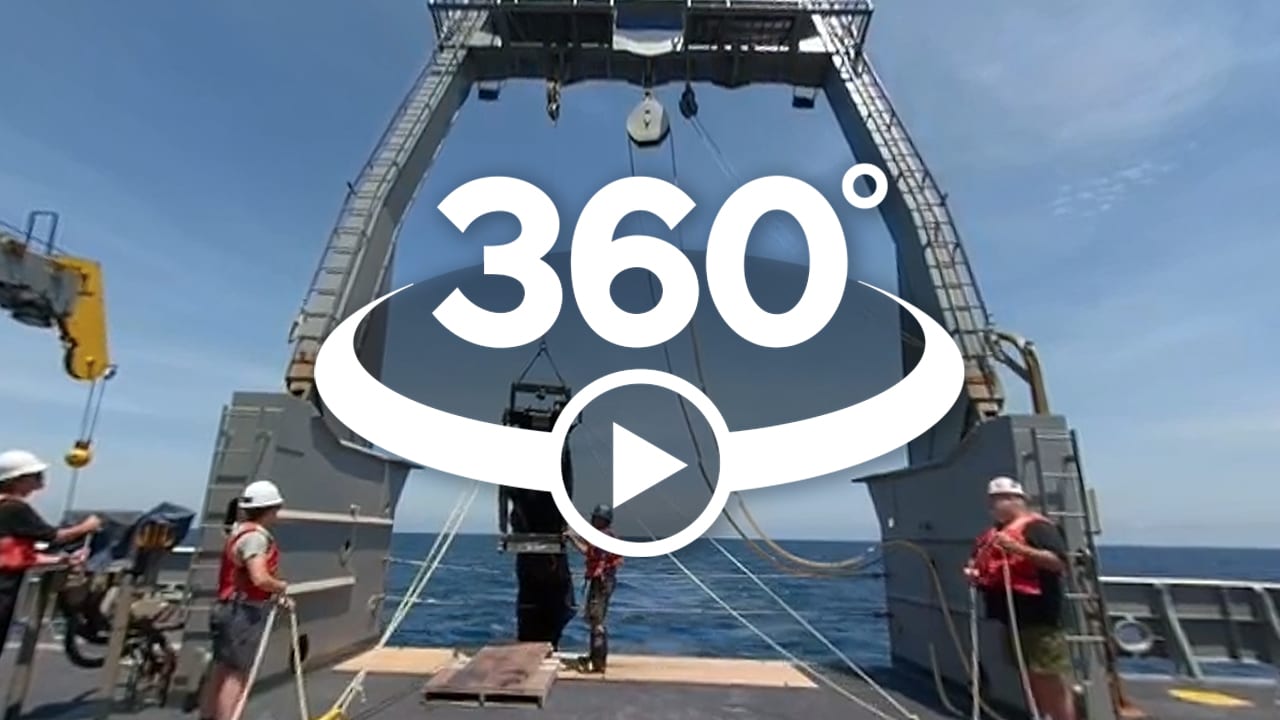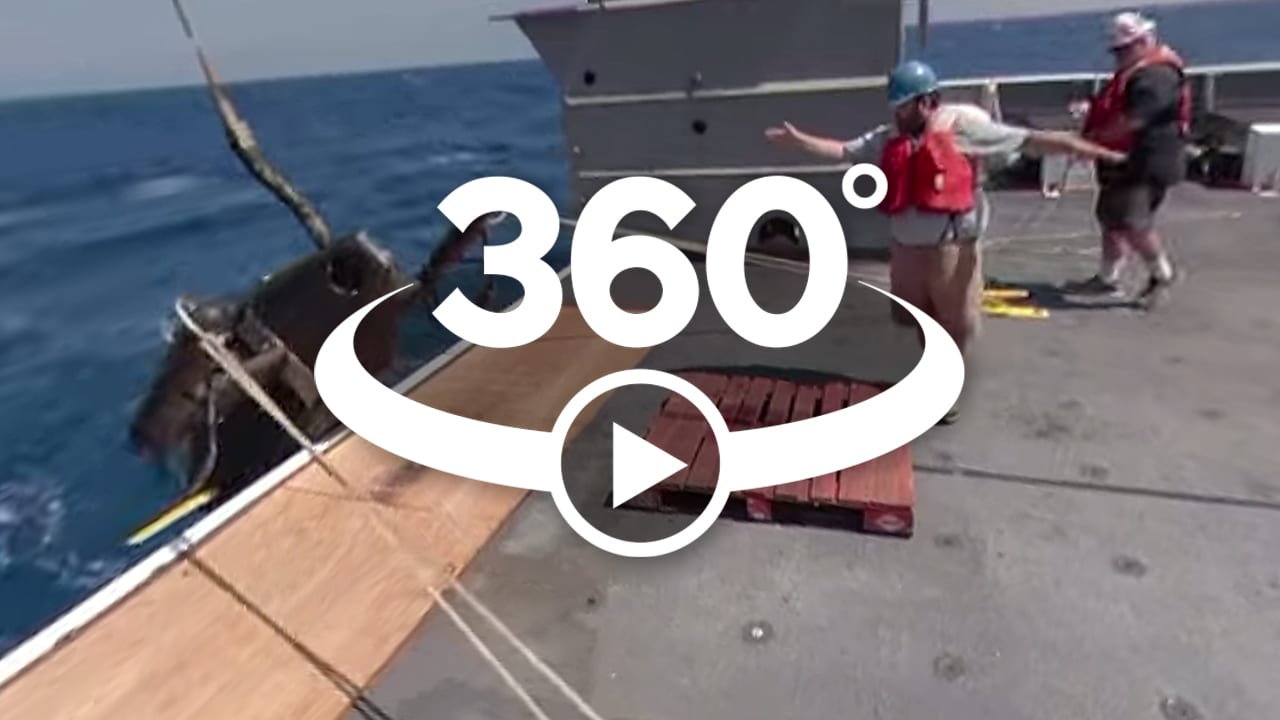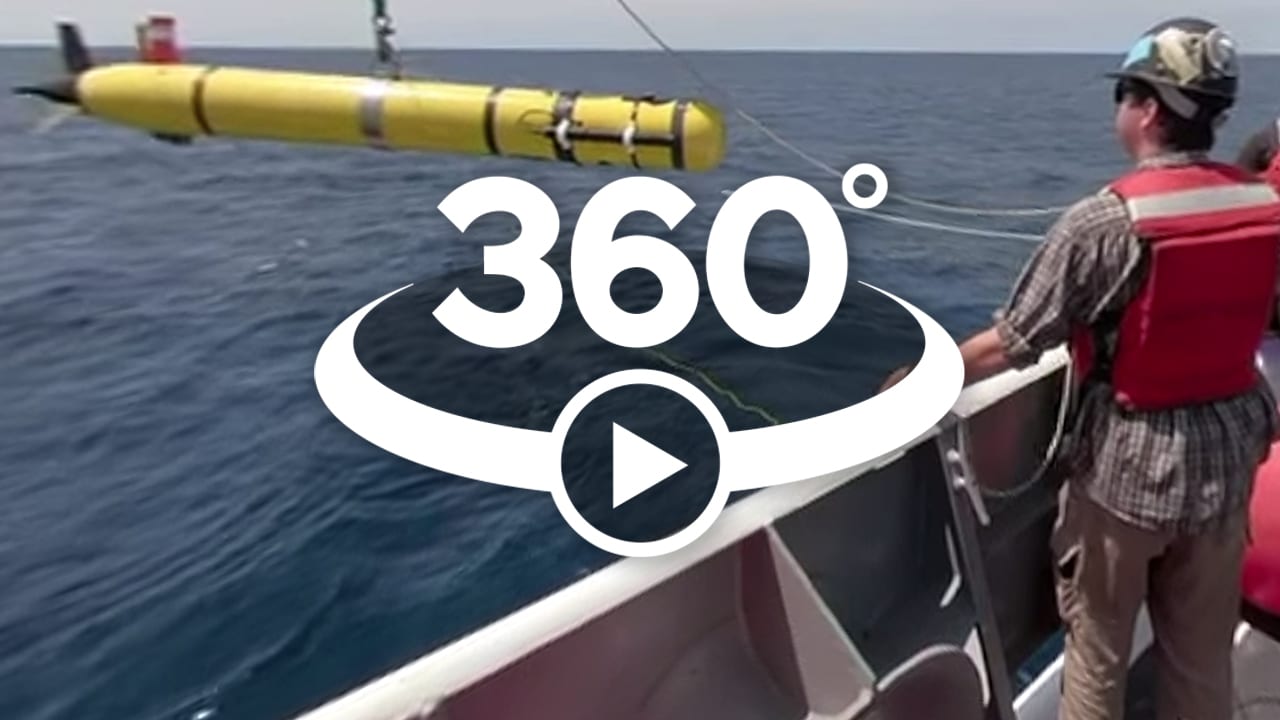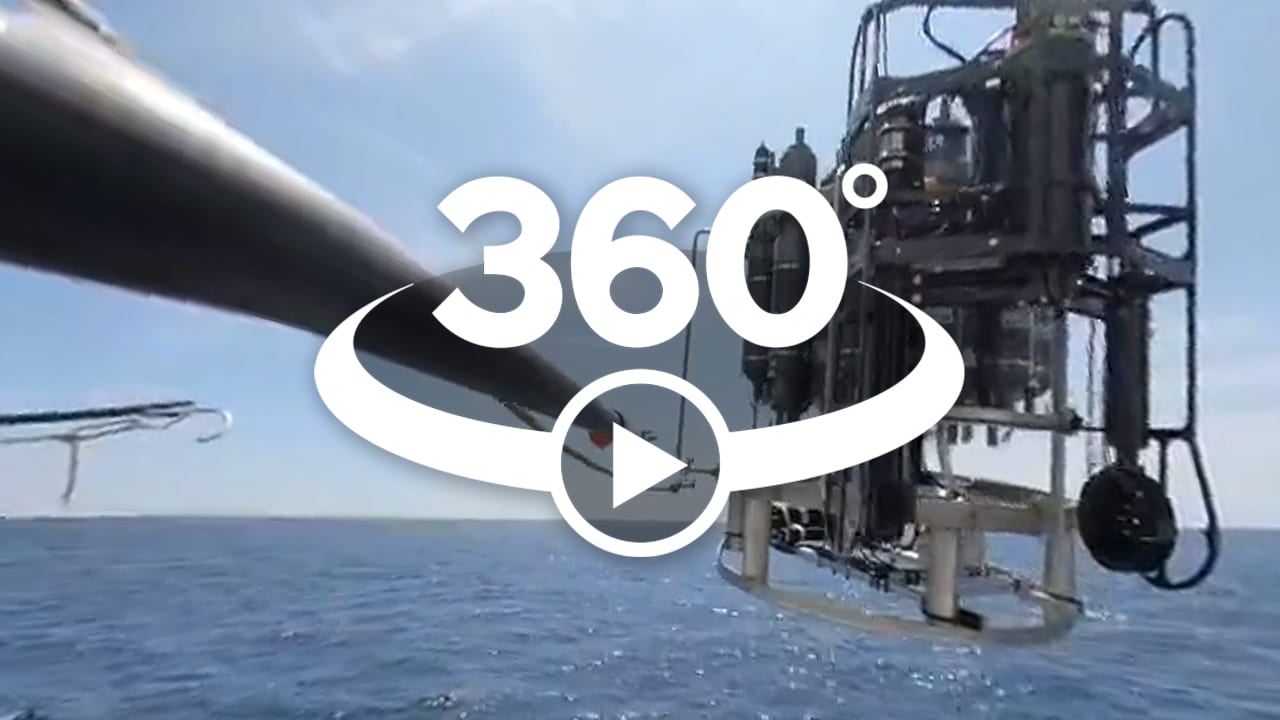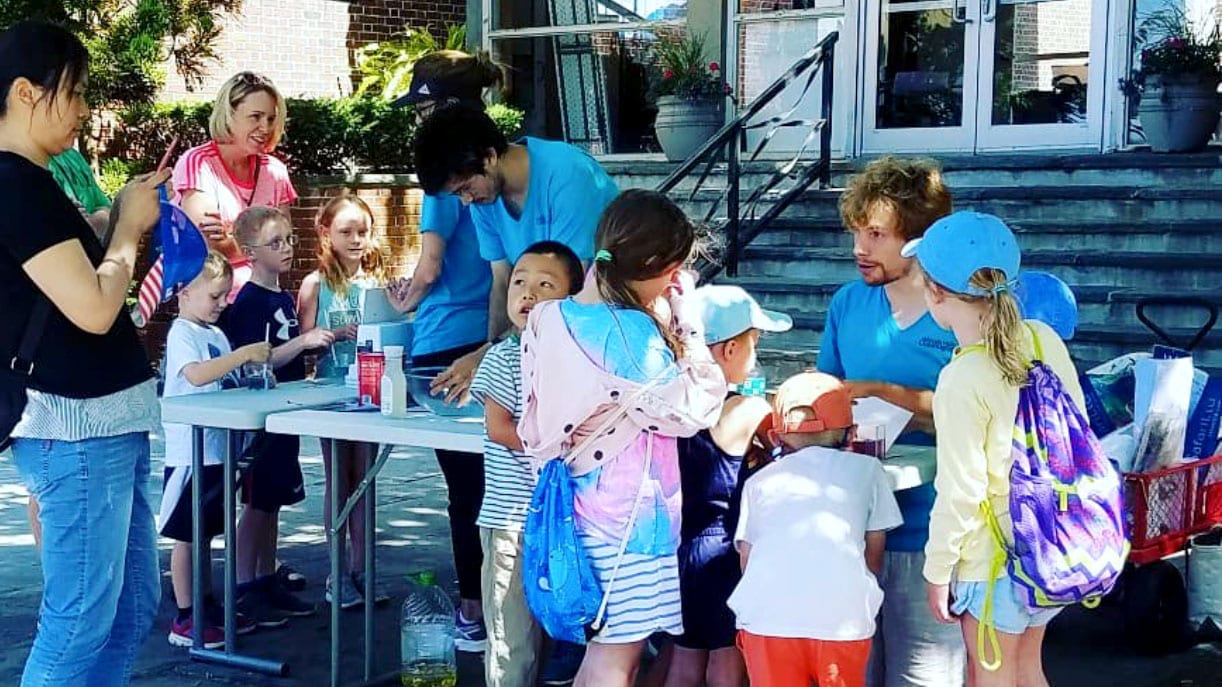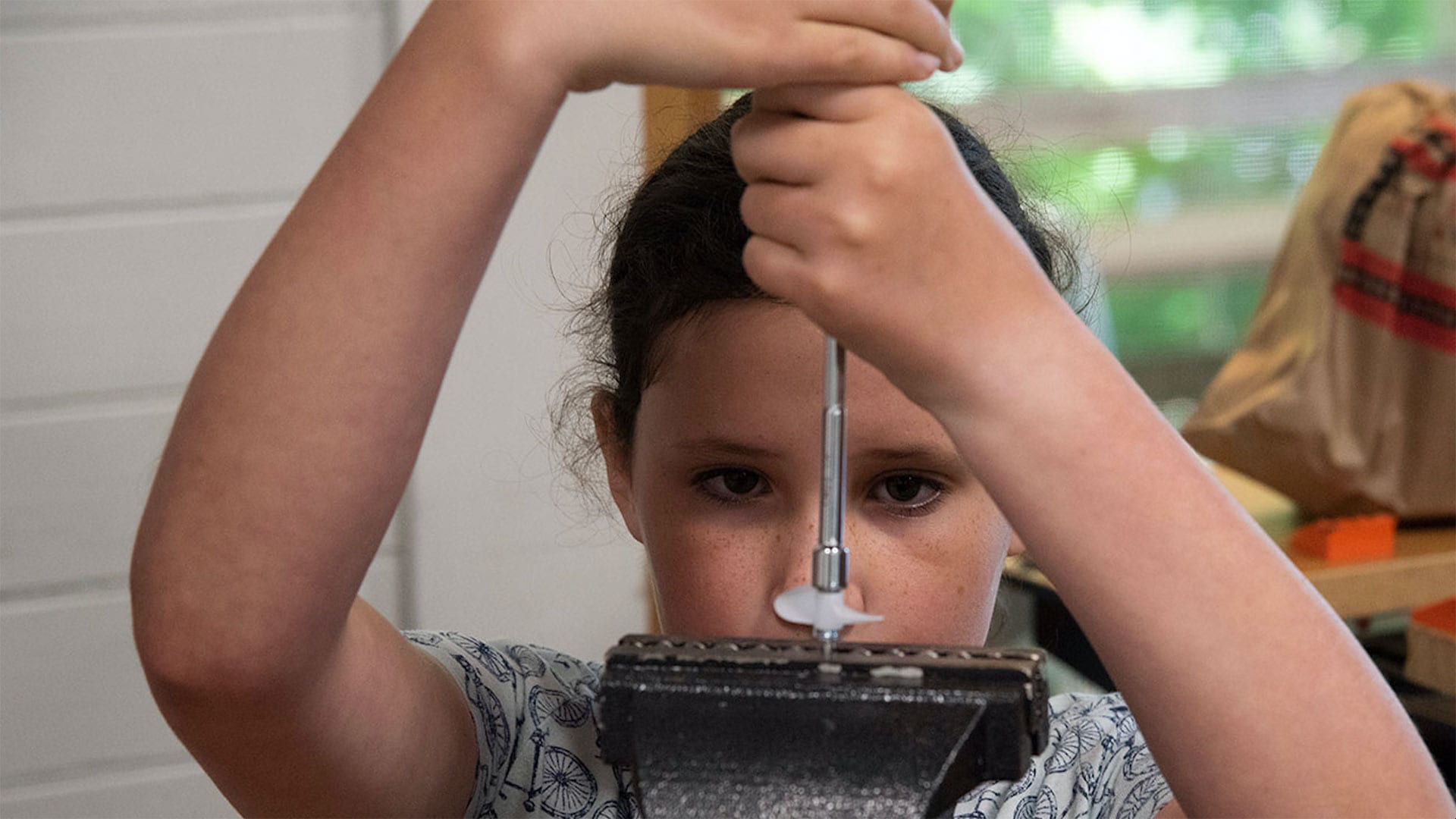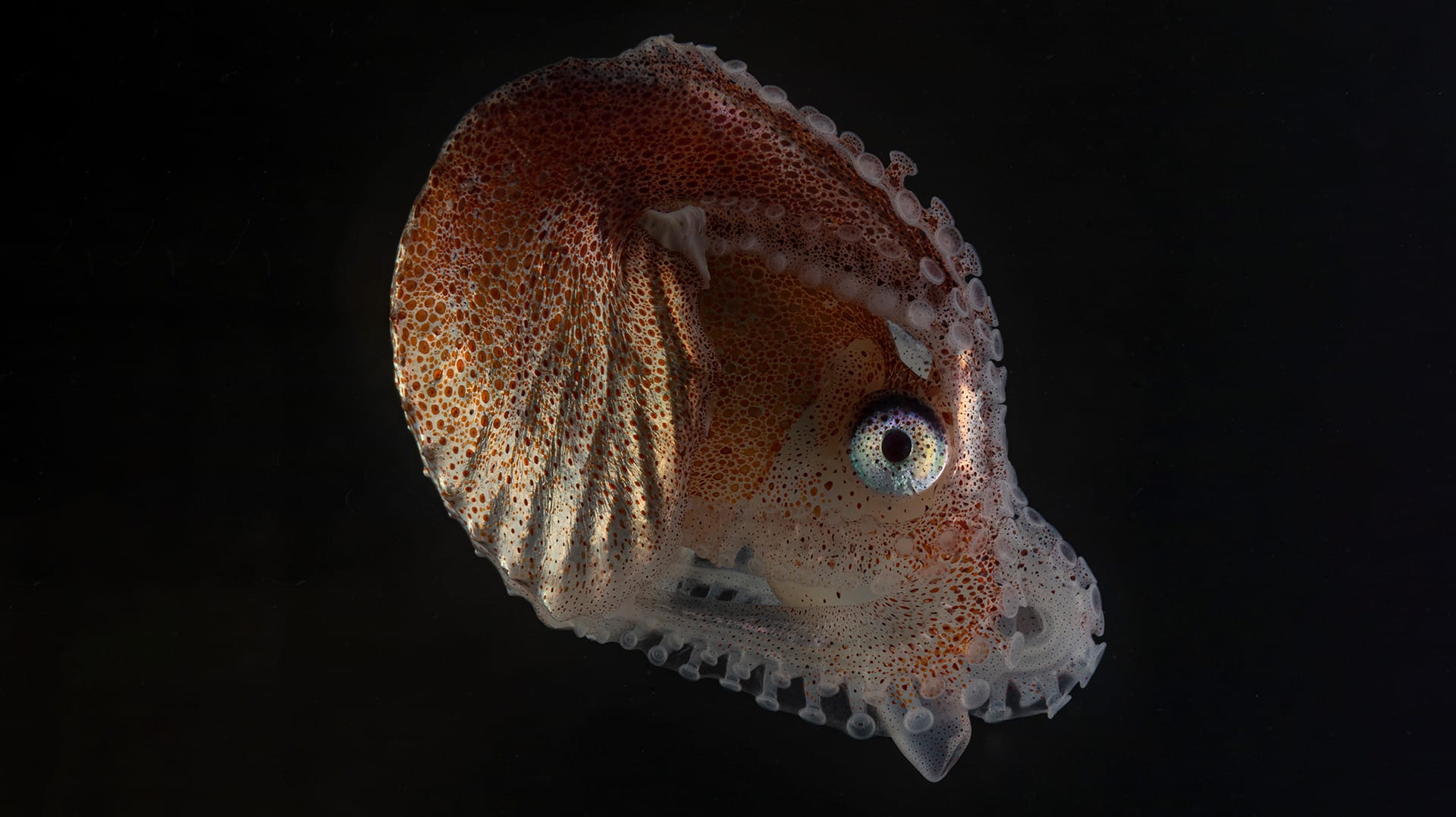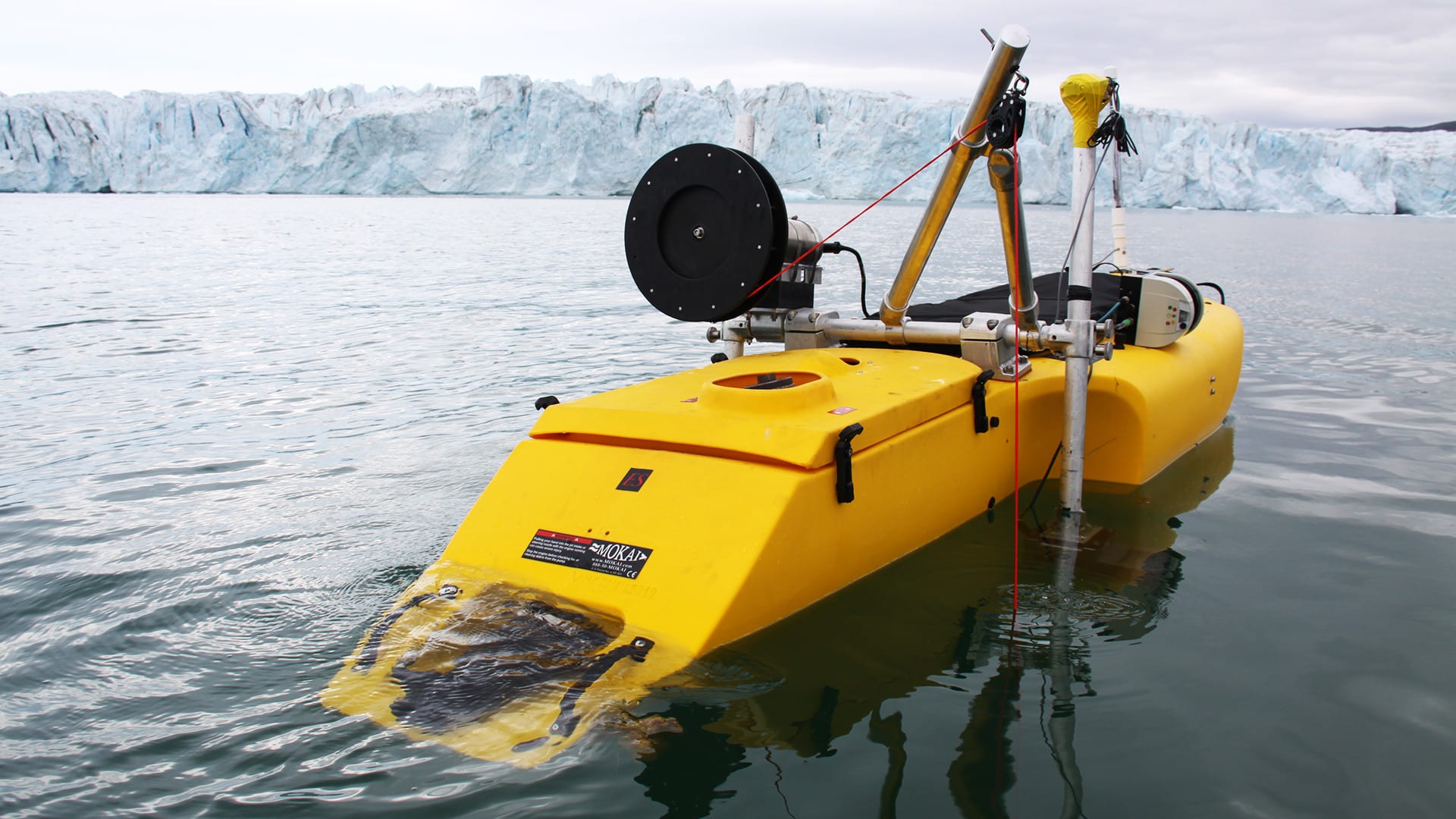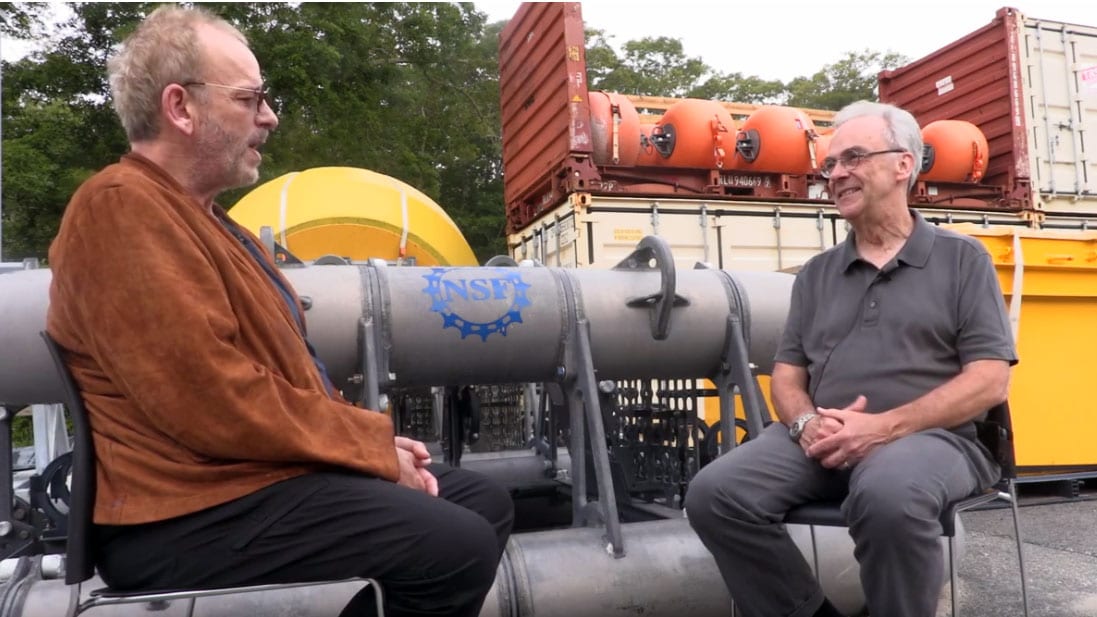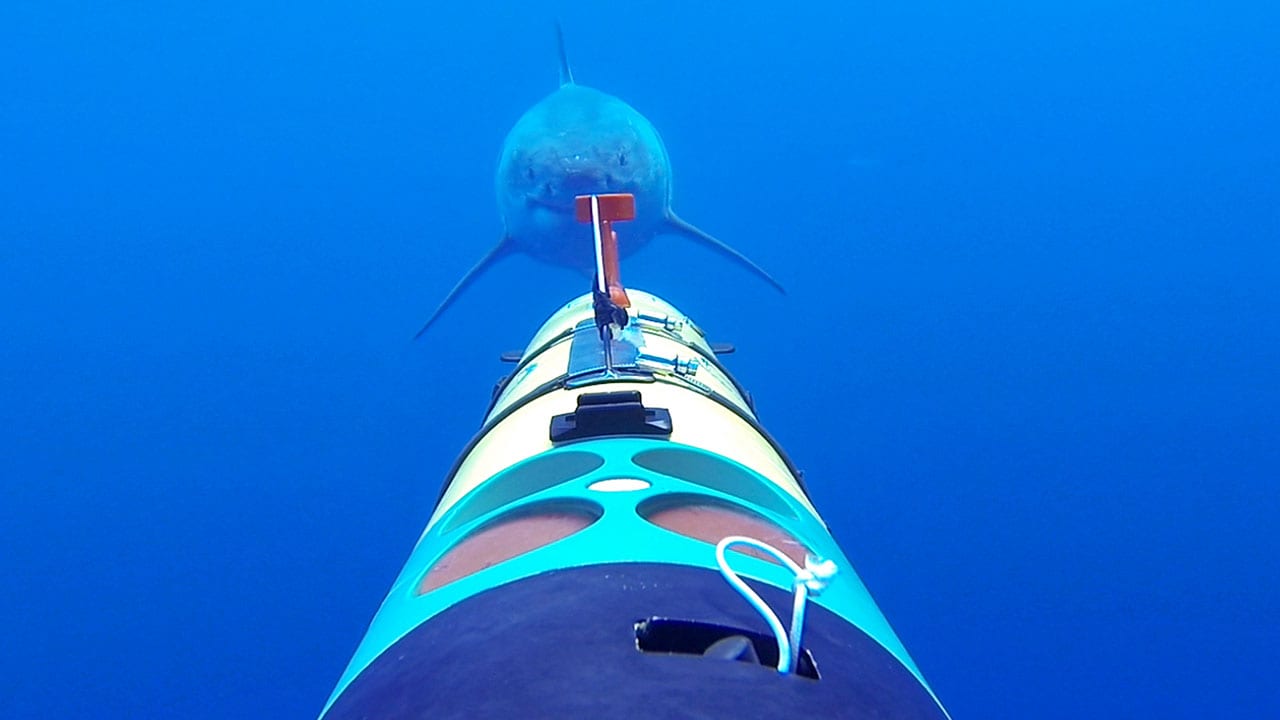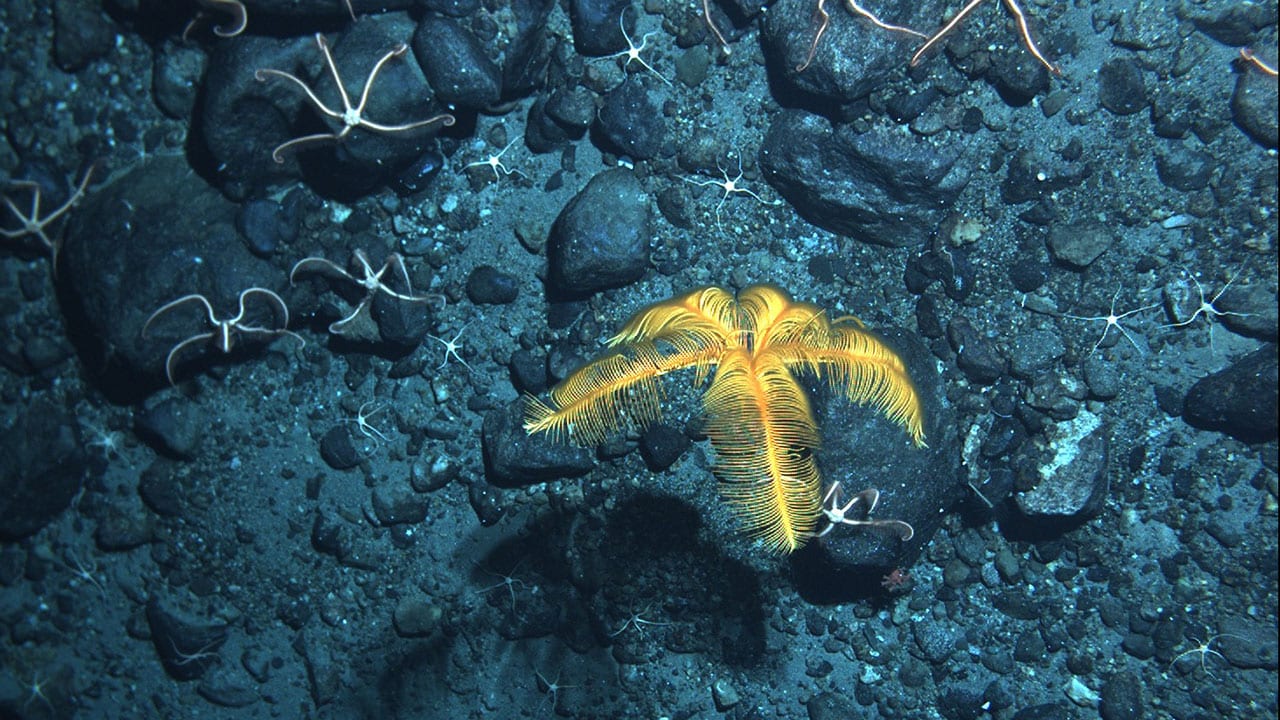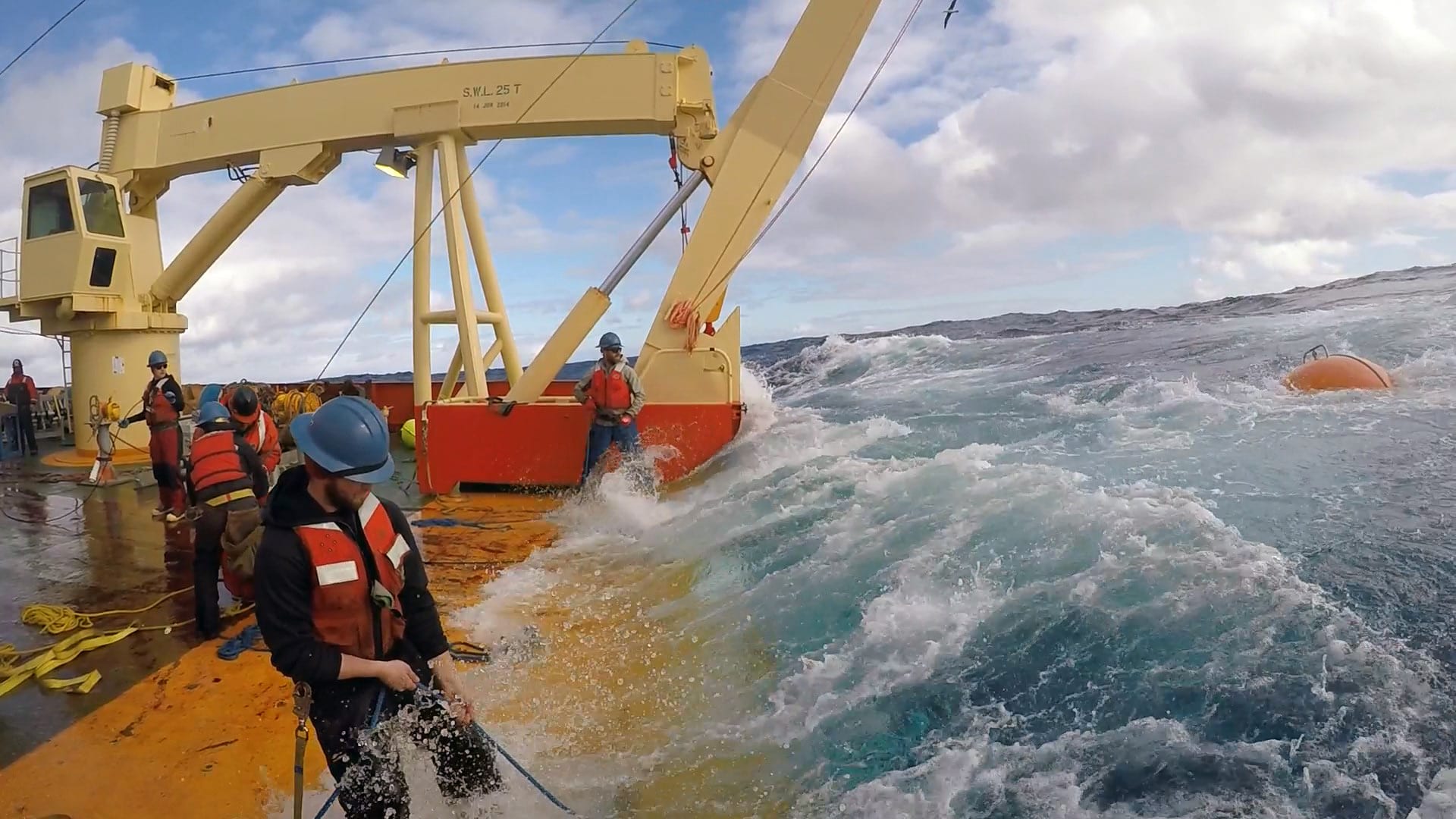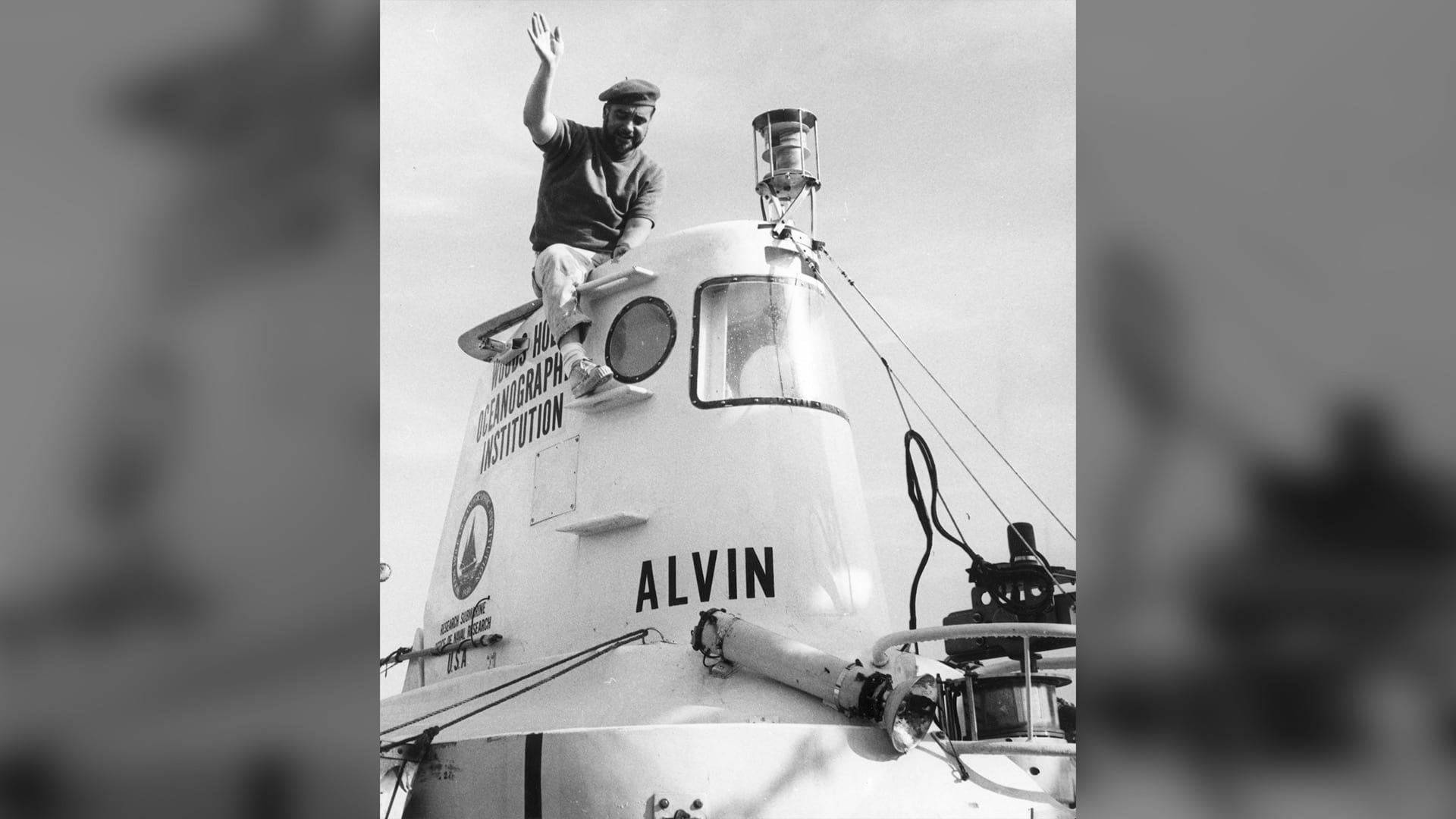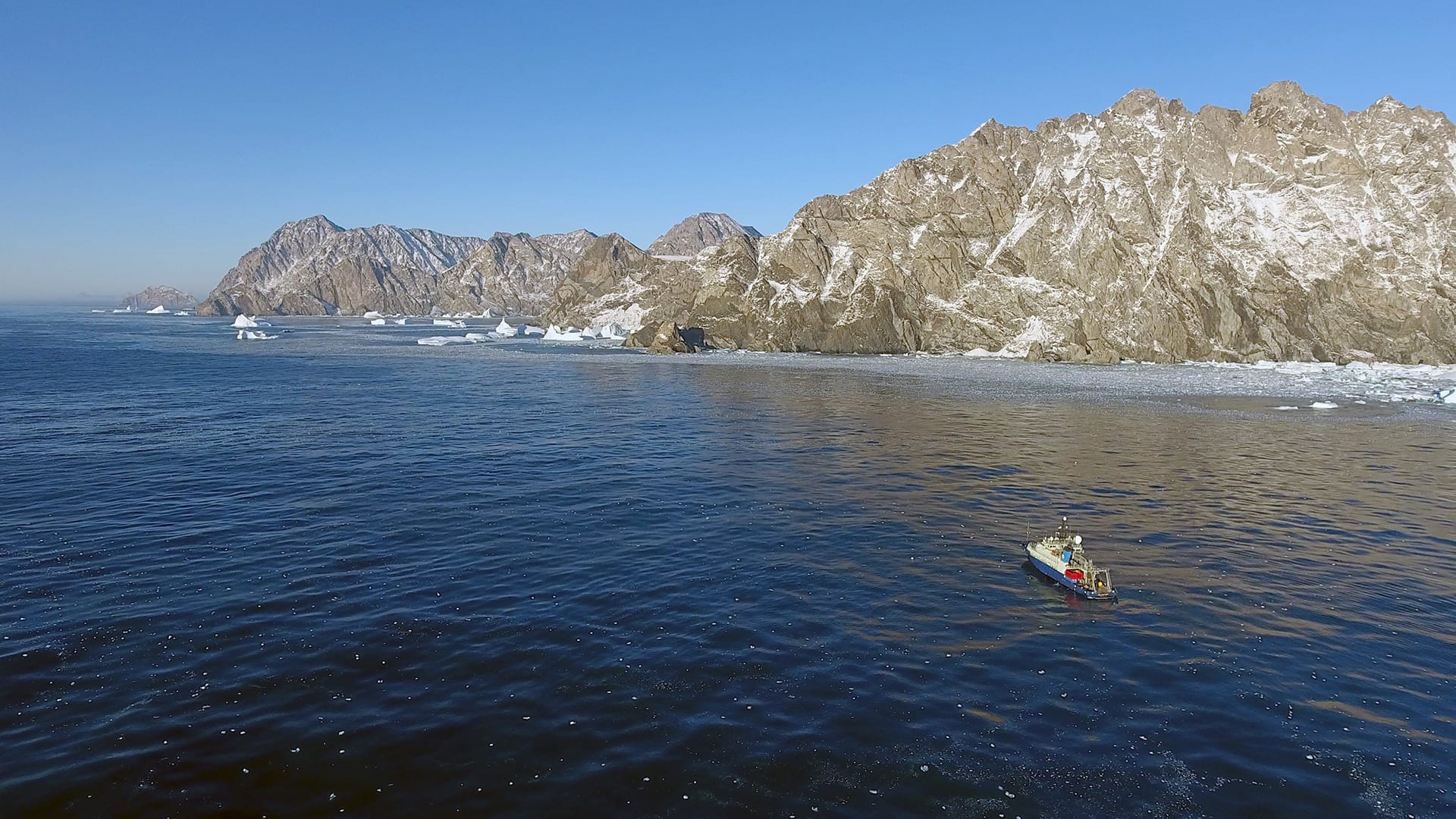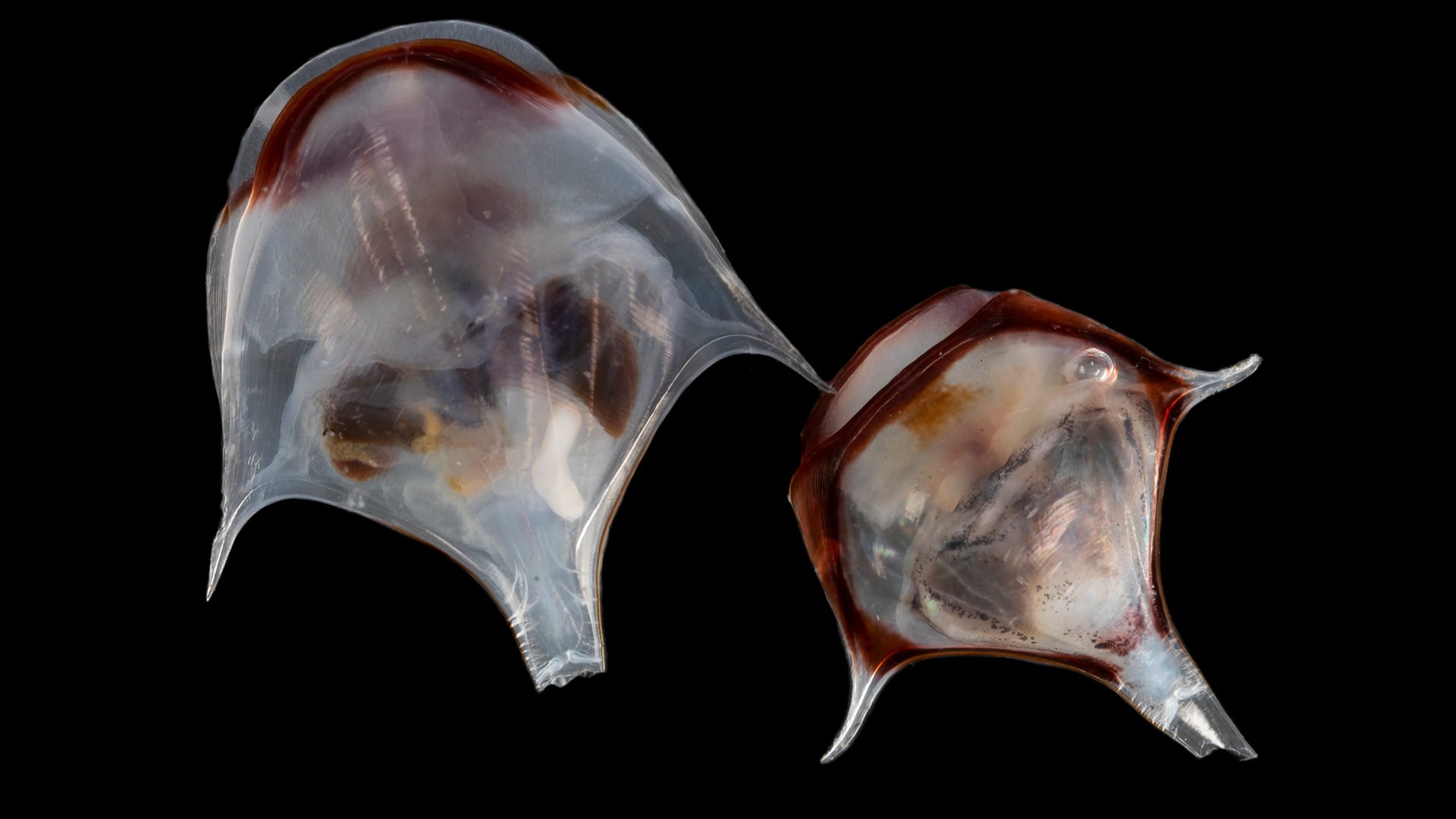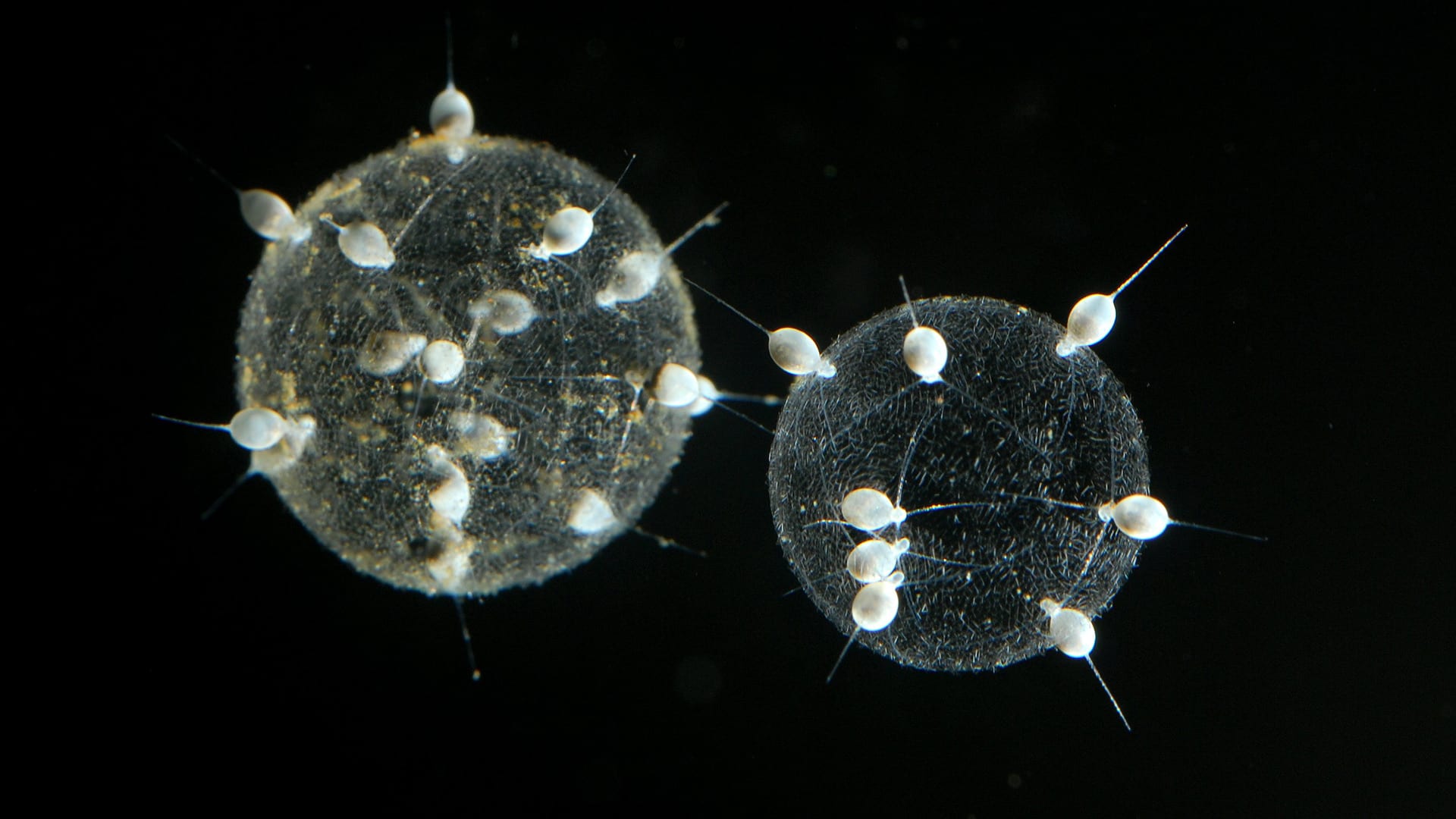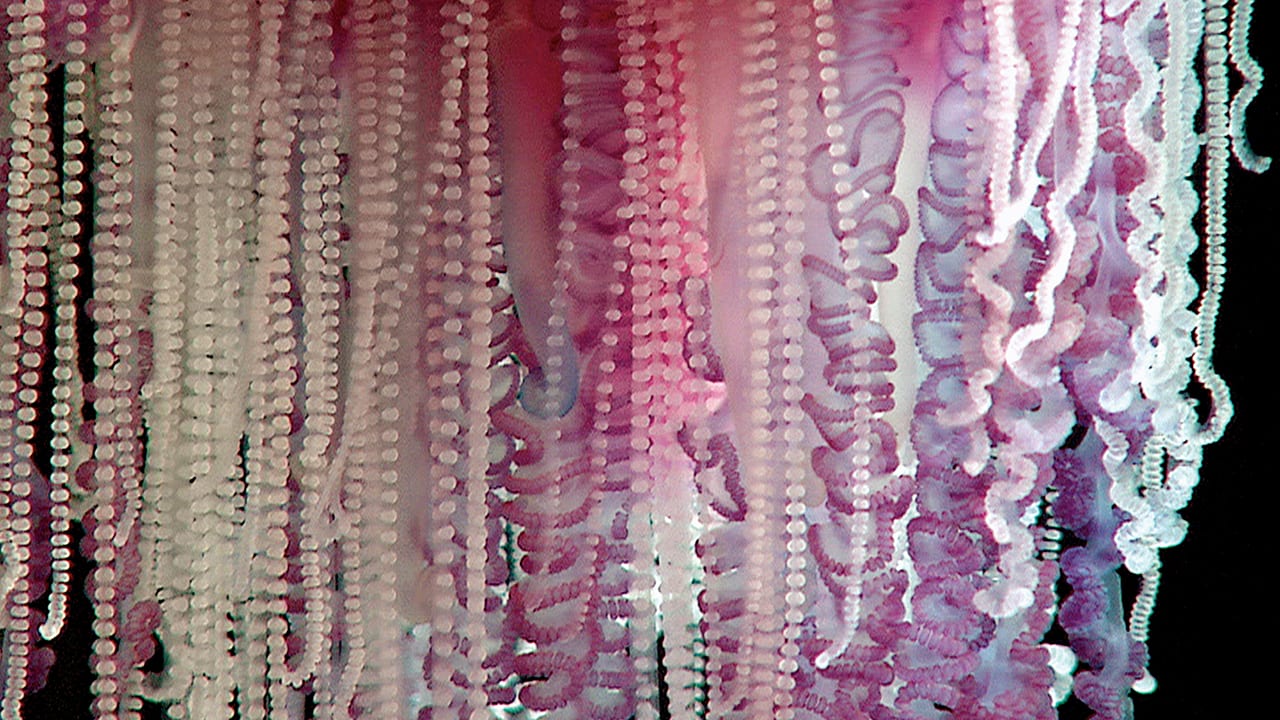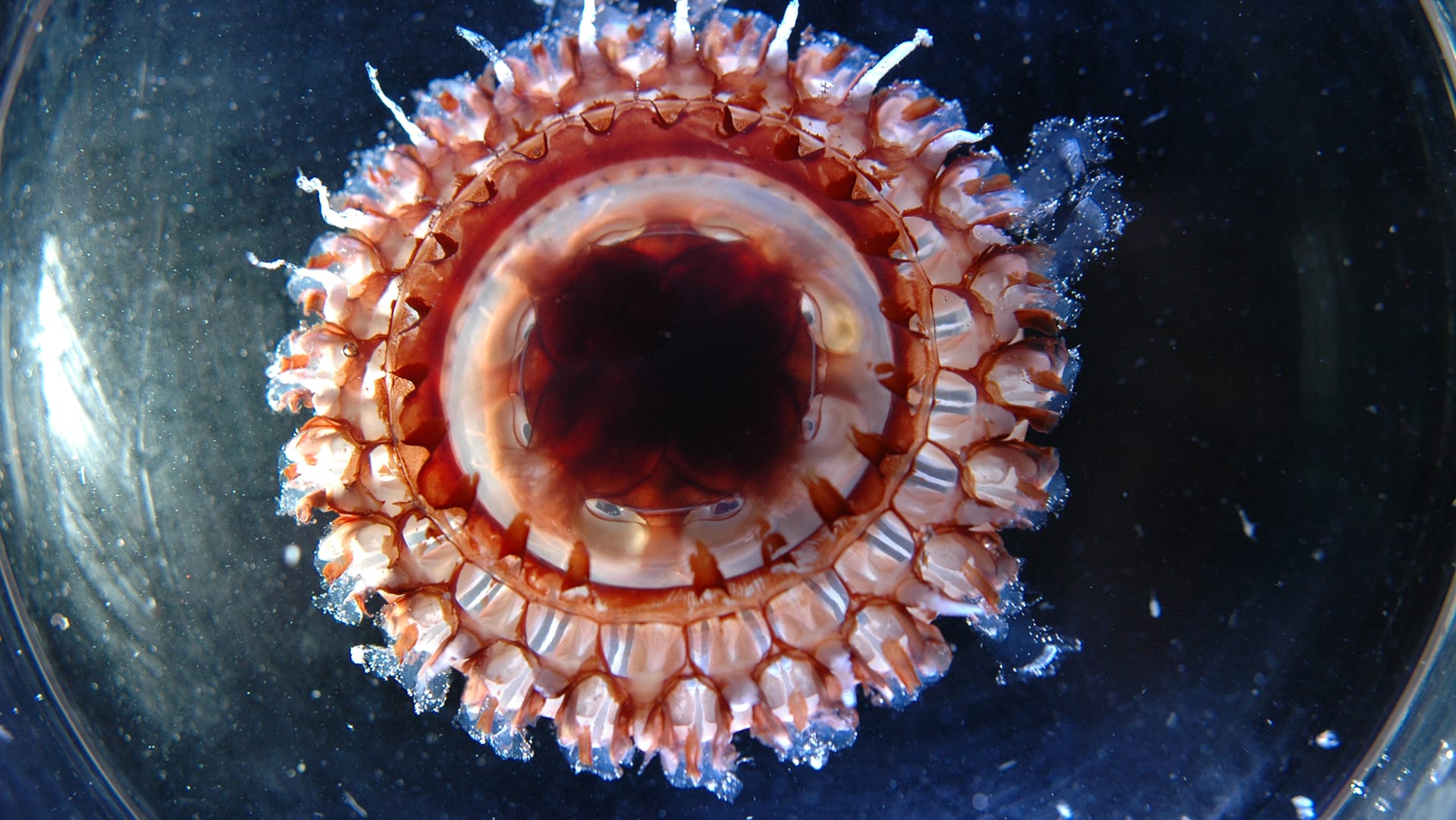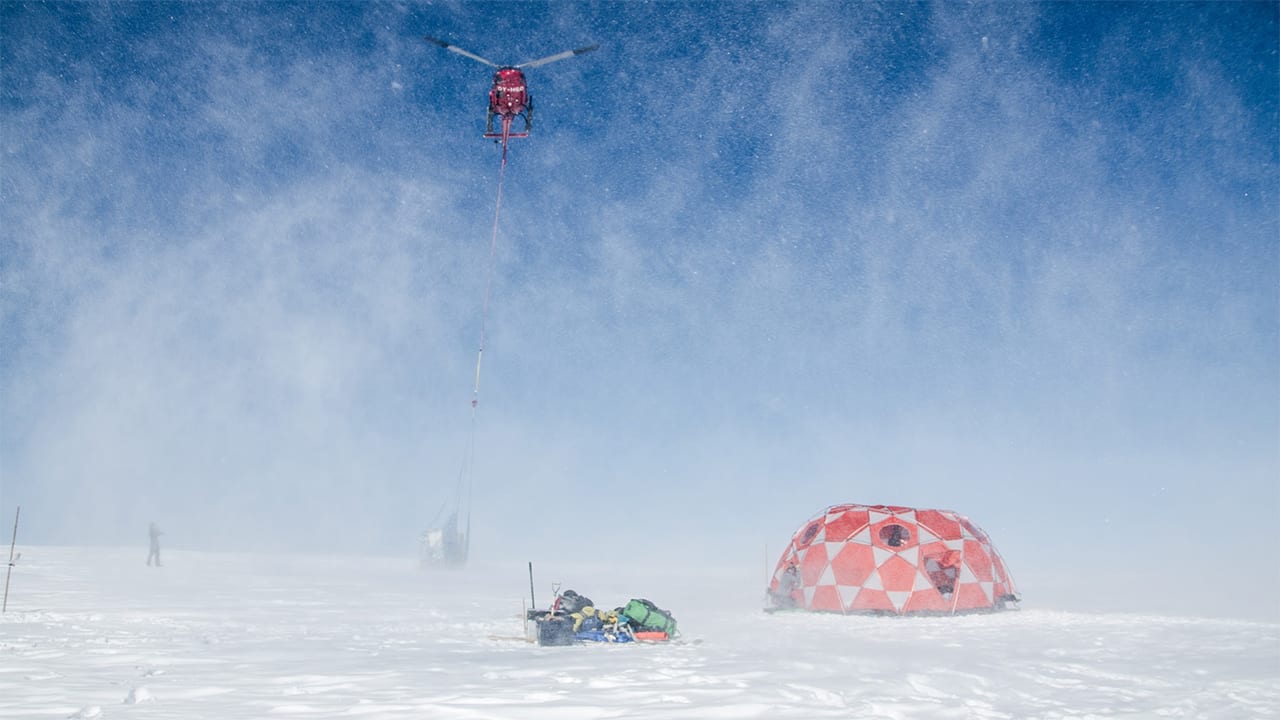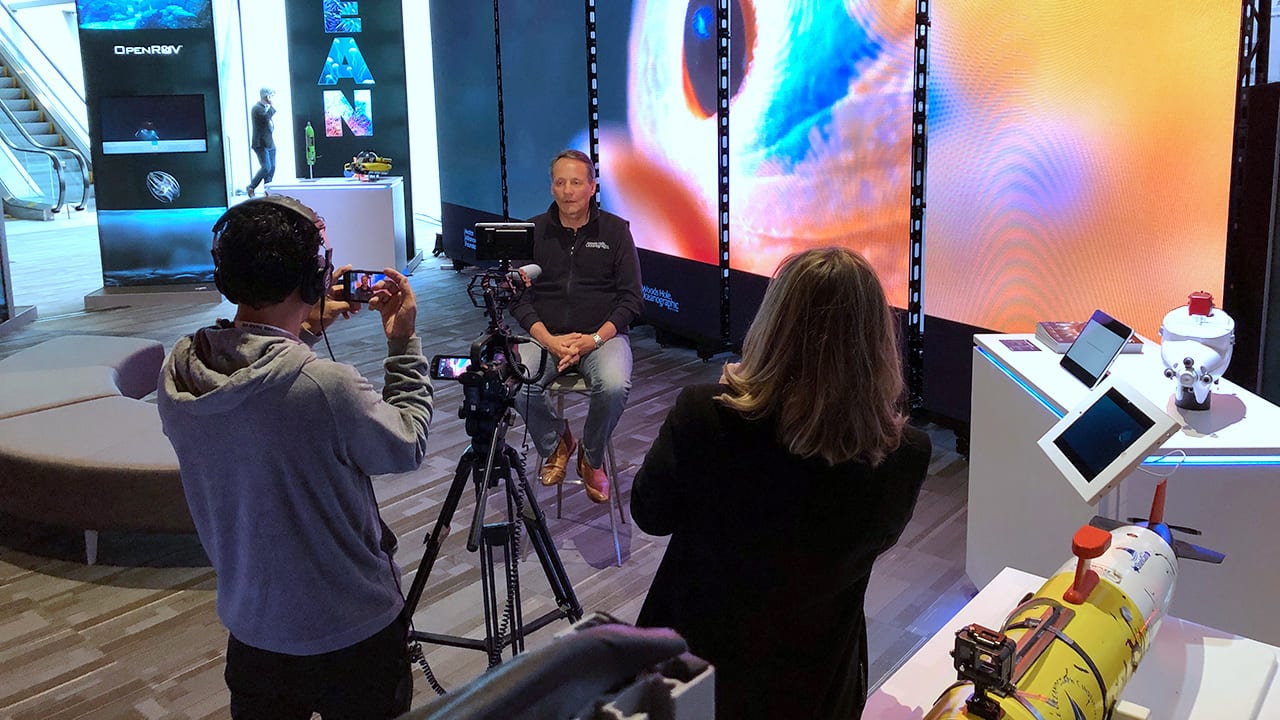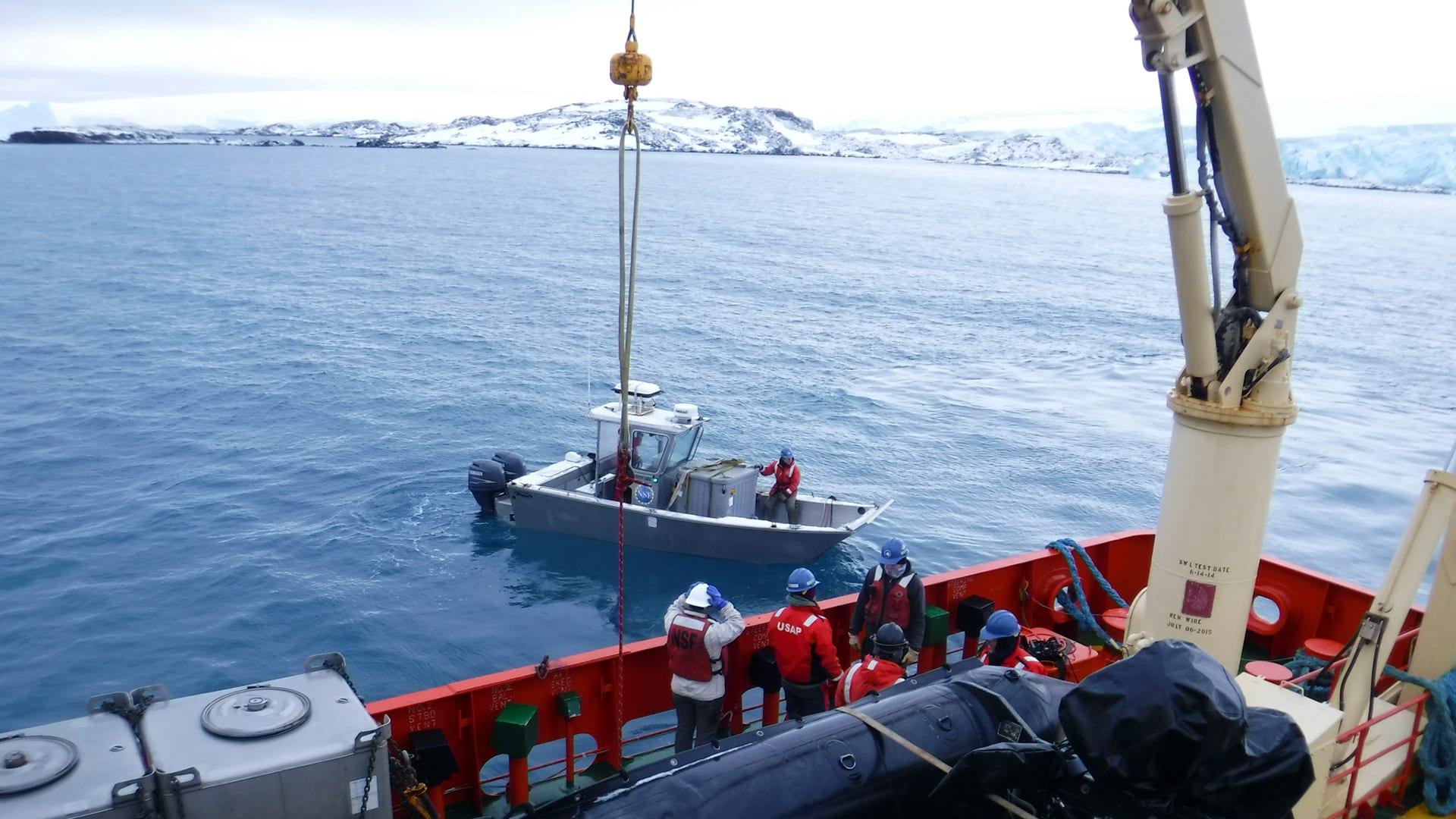Multimedia Items
360 Video: Departing Woods Hole
RV Thomas G. Thompson departs the Woods Hole Oceanographic Institution dock in July 2019 on the Shelfbreak Productivity Interdisciplinary Research Operation at the Pioneer Array (SPIROPA) expedition.
Read More360 Video: Deploying the VPR from the A-frame
The crew of RV Thomas G. Thompson deploys a video plankton recorder (VPR) in July 2019 on the Shelfbreak Productivity Interdisciplinary Research Operation at the Pioneer Array (SPIROPA) expedition.
The VPR is an underwater video microscope system that that takes images of plankton and particulate matter as small as 50 microns and up to a few centimeters in size. The instrument is used to help scientists quickly measure the distributional patterns of plankton without destroying their delicate forms, as can happen when using nets and bottles.
Read More360˚ Video: Deploying MOCNESS
The crew of RV Thomas G. Thompson deploys a Multiple Opening/Closing Net and Environmental Sensing System (MOCNESS) in July 2019 on the Shelfbreak Productivity Interdisciplinary Research Operation at the Pioneer Array (SPIROPA) expedition.
As MOCNESS tows behind a research ship, each net can be opened and shut independently so that it samples a discrete patch of water. The researcher chooses exactly when by using the environmental sensing system. This is an array of sensors mounted on the instrument frame that relays water conditions up to the ship in real time. The data also help researchers match what they find in their sample to the physical properties of the seawater.
Read More360˚ Video: Deploying the VPR from Deck
The crew of RV Thomas G. Thompson deploys a video plankton recorder (VPR) in July 2019 on the Shelfbreak Productivity Interdisciplinary Research Operation at the Pioneer Array (SPIROPA) expedition.
The VPR is an underwater video microscope system that that takes images of plankton and particulate matter as small as 50 microns and up to a few centimeters in size. The instrument is used to help scientists quickly measure the distributional patterns of plankton without destroying their delicate forms, as can happen when using nets and bottles.
Read More360˚ Video: Deploying REMUS
The crew of RV Thomas G. Thompson deploys a REMUS autonomous underwater vehicle in July 2019 on the Shelfbreak Productivity Interdisciplinary Research Operation at the Pioneer Array (SPIROPA) expedition.
Remote Environmental Monitoring UnitS, or REMUS, are low-cost robotic vehicles designed by WHOI’s Oceanographic Systems Lab to operate with a simple laptop computer. Initially conceived for coastal monitoring, these torpedo-shaped vehicles are now used as platforms for a wide variety of instruments at a range of ocean depths. REMUS are particularly well suited for surveying and mapping, travelling methodically over an area like a lawnmower to sample key ocean characteristics.
Read More360˚ Video: Recovering a CTD Rosette
The crew of RV Thomas G. Thompson recovers a conductivity, temperature, depth (CTD) sensor with a rosette of Niskin sampling bottles in July 2019 on the Shelfbreak Productivity Interdisciplinary Research Operation at the Pioneer Array (SPIROPA) expedition.
A CTD is the primary tool oceanographer use to determine the essential physical properties of seawater. It gives scientists a precise and comprehensive charting of the distribution and variation of water temperature, salinity, and density that helps to understand how the oceans affect life.
Read MoreFuture Researchers
At the Woods Hole Science Stroll budding researchers shared their ideas for the future of ocean exploration. (Photo by A. Brown, Woods Hole Oceanographic Institution)
Read MoreEngineering the future
Created by WHOI engineer Anna Michel, the GOES (Girls in Ocean Engineering and Science) Institute, hosts girls going into sixth grade for a week of engineering activities
Read MorePelagic octopus
Argonauts like this pelagic octopus, found in the ocean twilight zone, are rarely found in the wild. Only the females like this lovely lady are able to create a […]
Read MoreJetYak
Autonomous vehicles explore places too dangerous for humans. Here, JetYak embarks on a survey mission along the Sarqardliup glacier in Greenland. (Photo by by Fiamma Straneo, Woods Hole Oceanographic Institution)
Read MoreMark Abbott interviewed for ocean podcast
Mark Abbott, President and Director of the Woods Hole Oceanographic Institution, sits down with colleague Dr. Greg Stone. Mark leads the conversation with how WHOI has adapted their mission to address the issues that are affecting today’s critical climate crisis.
Read MoreThe legacy continues with R/V Neil Armstrong
SharkCam
SharkCam, a customized REMUS robot, follows and films a great white shark by tracking acoustic signals sent from a tag affixed to the shark’s upper fin. (Photo by Amy Kukulya, […]
Read MoreStars and Stripes
A golden feather star raises its arms to feed. Behind, brittle stars are perched across the boulder-field. (Photo courtesy of J. R. Aronson)
Read MoreKnee-Deep
WHOI engineer Chris Basque deploys instruments for the Ocean Observatories Initiative (OOI) Global Array as waves crash board the R/V Nathaniel B. Palmer. The array is laden with instruments which […]
Read MoreSitting atop a legend
HOV Alvin pilot Valentine Wilson sits atop the research submarine in 1966, shown here in its first incarnation. After Wilson came back from a trip to the Bahamas sporting a […]
Read MoreR/V Armstrong in Southern Greenland
During a recent transit through the Prince Christian Sound in southern Greenland, the crew of the research vessel Neil Armstrong took advantage of calm conditions during an otherwise storm-tossed spring […]
Read MorePotato chips of the sea
Sometimes referred to as the potato chips of the sea, two pteropods (Diacria trispinosa) move through the Ocean Twilight Zone in search of food. Photo by Paul Caiger, Woods Hole […]
Read MoreMacroscopic Life
They look like space stations, but actually are colonial forms of single-celled organisms called radiolarians, collected in the deep Celebes Sea in the Philippines. The white blobs are individual cells, […]
Read MoreBeads that Sting
These may look like a curtain of Mardi Gras beads hung in a doorway, but they are actually Man-o’-War tentacles that can inject toxins into any creature unlucky enough to […]
Read MoreNature Imitating Art
From the underside, the jellyfish Atolla, looks more like a chandelier than an animal. Atolla are abundant the world over in the Ocean Twilight Zone and shallower depths. When touched or […]
Read MoreOn Top of the World
A helicopter takes off with a sling-load of freshly-drilled ice cores taken from the 2000-meter-high summit of an ice cap in west Greenland. “There was a mix of excitement to […]
Read MoreFeatured Image: WHOI at TED2019
WHOI engineer Andy Bowen talks with a reporter at the recent TED2019 Conference in Vancouver about the ocean’s critical role in the health of our planet and how technology […]
Read MoreThe Krill Crate
Scientists from WHOI and the University of Oregon transport a tank of juvenile krill (gray square box on small boat) to Palmer Station in Antarctica, where they will be analyzed […]
Read More
